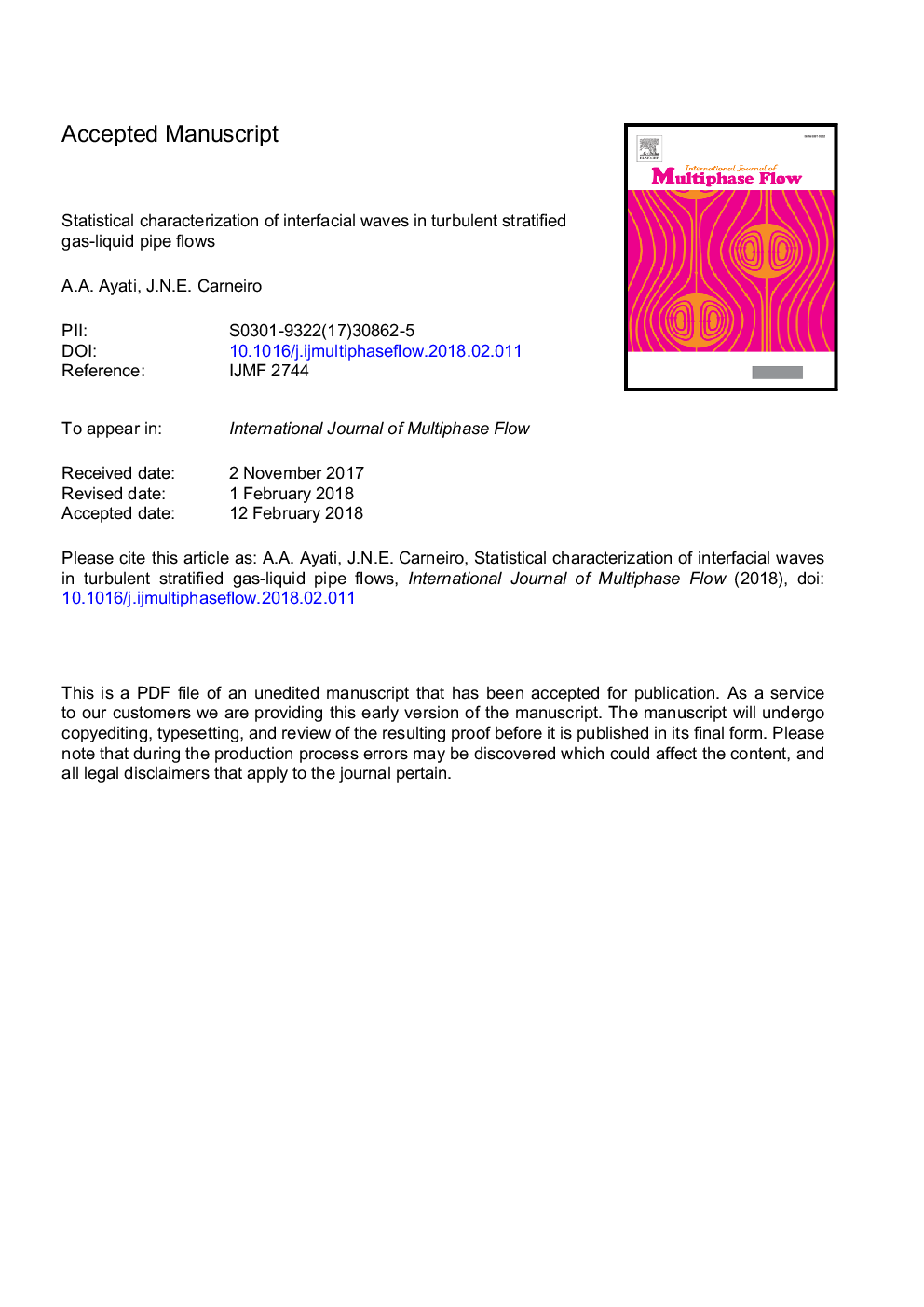| Article ID | Journal | Published Year | Pages | File Type |
|---|---|---|---|---|
| 7060119 | International Journal of Multiphase Flow | 2018 | 35 Pages |
Abstract
The main goal of this study is to offer an alternative method for distinguishing between various wavy flow patterns. The proposed approach is based on the Gaussian model, which is widely used in the characterization of ocean waves. Instead of the traditional sub-regime categorization which is based on a combination of visual observations and qualitative spectral description, this method categorizes a wave field depending on its degree of non-linearity and statistics of elevation parameters. This approach also allows parametrization of the interfacial structure. As a first step, this approach was carried out only for a selected set of flow rate combinations, in which the liquid superficial velocity was kept constant at Usl=0.10 m/s whilst the superficial velocity was increased from 1.0â¯m/s to 4.0â¯m/s with increments of 0.25â¯m/s. Subsequently, statistical moments of the interface elevation were computed and compared to literature data, for varying Usl and Usg. Based on the detailed statistical description of wave data, two flow regimes are categorized: wave amplitude growth and saturation. These regimes were also identified as quasi-Gaussian and non-Gaussian, respectively, based on comparisons of exceedence distributions. For Usl=0.10 m/s, the saturation regime occurs for Froude numbers (based on the relative bulk velocity) Frâ¯>â¯4. Finally, analysis of data for various Usl and Usg suggests that the critical Froude number for the transition to the saturation regime decreases with increasing liquid flow rate, and that the ratio of mode height to mean liquid height is nearly constant (Hâ0.2hL¯) in this regime, i.e. depth limited mode.
Related Topics
Physical Sciences and Engineering
Chemical Engineering
Fluid Flow and Transfer Processes
Authors
A.A. Ayati, J.N.E. Carneiro,
